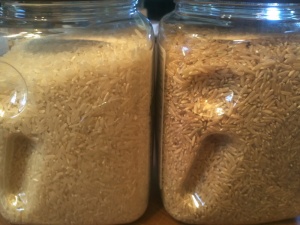Editor’s note: republished with permission from The Biology Files.
By Emily Willingham

A study from a Chinese group led by Chen-Yu Zhang of Nanking University and published in Cell Research, has uncovered the fascinating result that when people eat rice, they can absorb microRNAs (miRNAs)–tiny sequences of RNA–from the rice into the blood. These rice-originating miRNAs turn up in blood and tissues of people who eat rice and…here’s the kicker…one type of rice miRNA interacts with human proteins that are responsible for removing LDL (“bad” cholesterol) from the blood (!). It’s the first report of plant miRNAs ending up in people by way of diet and the finding that at least one of them alters an important process in the body.
The implications could extend in many a direction, but not as far as writer Ari Levaux would like to take them in this remarkably confusing article published on the Atlantic Website. Before taking on the errors and the overstretch that are that piece, let’s look at something far more interesting: miRNAs themselves. Continue reading “Why did The Atlantic publish this piece trying to link miRNAs and GMOs?”
Tag: substantial equivalence
Substantial equivalence
One important concept that is used in most countries to regulate products of genetic engineering is substantial equivalence. The way to determine substantial equivalence is comparative assessment. What do substantial equivalence and comparative assessment mean? Depending on the source we use, we might find different definitions and different opinions of how useful they are in determining the safety of products of genetic engineering. The USDA provides information on Food Safety Assessment and Considerations as part of their Focus on Food Biotechnologypage at the Food Safety Research Information Office.
What substantial equivalence can do is give us a starting point.
Continue reading “Substantial equivalence”